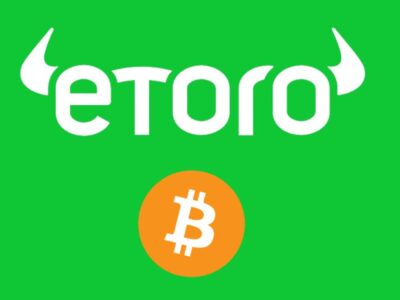Meta: SushiSwap (SUSHI) is an Ethereum-based token that powers SushiSwap, a decentralized digital currency exchange and automated market maker built on Ethereum blockchain.
These days, there is usually an old currency behind every new digital currency. A classic example is when the bitcoin cache was separated from the bitcoin. In the volatile and dynamic world of DeFi (Decentralized Finance), consider Uniswap’s SushiSwap Fork, one of the largest and most valuable decentralized cryptocurrency exchanges. SushiSwap is one of the fastest and most exciting types of digital currencies.
You can also read: Why YFI is the Key to Unlocking the Full Potential of DeFi Protocols?
What is SushiSwap (SUSHI)?
SushiSwap is software that runs on the Ethereum network and seeks to encourage a network of users to use a platform where users can buy and sell crypto assets. Similar to platforms such as Uniswap and Balancer, SushiSwap uses a set of liquidity pools to achieve this goal. Users first lock assets in smart contracts, and traders then buy and sell cryptocurrencies from these pools and exchange one token for another.
SushiSwap is one of a growing number of decentralized financial platforms (DeFi) that allow users to trade digital currencies without the need for a central operator. This means that decisions about SushiSwap software are made by its original digital currency holder, SUSHI. Anyone with an asset balance can make changes to how it works and can vote on suggestions made by other users.
How does SushiSwap (SUSHI) work?
SushiSwap is a platform that allows users to buy and sell various digital currencies. The fee for each swap is 0.3%, of which 0.25% is paid to liquidity providers and 0.05% to SUSHI and given to SUSHI token holders.
This platform is an automated marketing making (AMM) that, as mentioned earlier, acts as a decentralized exchange. There is no central reference or grammar. SushiSwap digital currency trading is done using smart contracts in liquidity pools. SushiSwap customers become liquidity providers (LPs) by locking their encrypted assets into a liquidity pool. At SushiSwap, anyone can provide liquidity and receive incentives commensurate with their share of the pool. This is done by placing two tokens of equal value in the pool. Each pool acts as a marketplace where other users can buy and sell tokens. For a more complete explanation of how AMM works in DEX protocols, read our Uniswap page.
You can exchange ERC-20 tokens in SushiSwap like any other DEX protocol. For example, stable currencies such as USDT and BUSD can be converted to digital currencies such as Bitcoin (BTC) and Ethereum (ETH). You can also generate passive cash by participating in other sushi operations. For instance, you can share SUSHI and get xSUSHI in SushiBar. Holders of xSUSHI staked can receive a 0.05% bonus on all transactions from all liquidity pools. Sushi holders who invest their tokens for xSUSHI can earn 2.5% of every NFT transaction in the NFT market after the release of Shoyu.
Bentobox SushiSwap is another way to gain motivation. This is a unique treasury that enables customers to take advantage of all of SushiSwap’s lucrative options. This means that by storing your assets in BentoBox, you can earn both by owning shares in SushiBar and by lending them to other users. At the same time, xSUSHI cardholders can benefit from the transaction fee collected by BentoBox.
Who are the founders of SushiSwap (SUSHI)?
Chef Nomi and 0xMaki (alias) founded SushiSwap in August 2020. Apart from their Twitter identities, there is little information about the two. The project attracted a large number of users immediately after its launch and was listed on Binance on September 1, 2020.
Sam Bankman-Fried, CEO of FTX Derivatives Exchange and small trading company Alameda Research, seized real ownership of SushiSwap on September 6 and transferred the tokens from Uniswap to the SushiSwap platform on September 9.
Bankman-Fried joined Jane Street Capital, a small trading company after graduating from MIT with a degree in physics, where he first encountered digital currencies. Sam Bankman-Fried is a well-known figure in the world of digital currencies and was first associated with SushiSwap when the SUSHI token was listed on the FTX Derivatives Exchange.
What makes SushiSwap (SUSHI) unique?
SushiSwap distinguishes itself from traditional decentralized exchanges as an automated market maker (AMM) by eliminating order books while avoiding liquidity problems. SushiSwap, like its parent company AMM Uniswap and others, has made several important tweaks to enhance the impact of network participants on the company’s future.
The fate of SushiSwap is completely under the control of SUSHI holders. SUSHI users can vote on protocol improvement proposals, set fee structures, vote on new liquidity pools, and jointly provide funding for sushi-related projects.
Some Uniswap consumers were unhappy with what they thought was the low liquidity providers’ fees. The platform’s interaction with venture capitalists and the decentralization of Uniswap governance were also criticized.
The introduction of the SUSHI token was a key innovation of SushiSwap. SUSHI tokens allow LPs to receive incentives, however, unlike Uniswap, they allow holders to receive a percentage of the fee long after the liquidity is actively stopped.
In addition, digital currency addresses the issue of Uniswap decentralization by granting sovereign rights to SUSHI holders. SushiSwap took a similar approach to distribution and opted for “fair start-up”, which means no password allocation for venture capitalists.
Sushi Tokens
Sushi tokens are given as a reward for extracting liquidity. This token allows its holders to participate in the management of the platform, giving them the right to receive a portion of the costs paid to the protocol by traders. To manage the platform, SUSHI holders can submit a SIP Swipe Improvement Proposal that token holders can vote on with their tokens.
Of course, some people also speculate about the price of sushi, and tokens can be traded at large exchanges such as Binance, FTX and OKEx.
By March 2021, there will be approximately 140 million sushi in circulation, for a total supply of approximately 205 million sushi, which will grow at the Ethereum block rate. According to statistics, under this strategy, SUSHI supply will increase by 650,000 daily, bringing the total supply to 326.6 million one year after launch and nearly 600 million after two years. Shortly afterwards, the SUSHI community voted to gradually limit the number of sushi produced per block by 2023, when the maximum supply of sushi will be 250 million.
Pros and Cons of sushi
Pros:
- Extensive support for large exchanges. Since the launch of SushiSwap, its token has been widely endorsed by some of DeFi’s main letters: Binance and Huobi listed the token a few days after its release.
- Privileges for loyal users. SUSHI sponsors will be paid a share of the SushiSwap transaction fee. The platform’s liquidity providers (LPs) receive free sushi for their support.
- Fair playground. A decentralized, community-based, anonymous platform provides potential fair play for farmers and crop traders.
Cons:
- Suspicious ethics. SushiSwap’s move to emulate Uniswap and turn its project into a strong competitor to the main platform has understandably disappointed its former teammates. The decision to copy Uniswap was by no means completely illegal, but it did affect SushiSwap’s reputation in several ways.
- There are no audits yet. As of September 2020, SushiSwap remains unaudited. The team wrote open invitations to Trail of Bits, PeckShield, OpenZeppelin, Consensys, Certik, and Quantstamp to review the contracts, but received no response.
- Anonymous Development Team. Given that SushiSwap is run by anonymous developers while not being audited, depositing funds into their smart contract can be a big risk.
- Controversy – Stubborn controversy. In early September 2020, Chef Nomi cashed in a quarter of the project’s development capital – more than $ 13 million – without notice. Understandably, the news shocked the crypto community, leading to allegations of fraud and a significant drop in the price of sushi. A few days later, Chef Nomi sent the keys to the project to SushiSwap shareholder Sam Bankman-Fried, who is still in charge of the project.
In conclusion
If nothing else, SushiSwap is an impressive and ambitious experiment based on a widely successful DeFi protocol – Uniswap. Added social governance, high rewards and benefits for supporters are what distinguish it from the project from which it originally originated. SushiSwap, on the other hand, is not yet an audited project. The SUSHI developer was embroiled in serious controversy by selling all his SUSHI tokens to ETH before jumping off the ship. Users can never feel completely secure investing and supporting an uncontrolled and unstable project. Are sushi farmers in it for a quick profit? Will the project be able to pay off a significant debt to overtake Uniswap? Only time will tell if the sushi test is successful.






